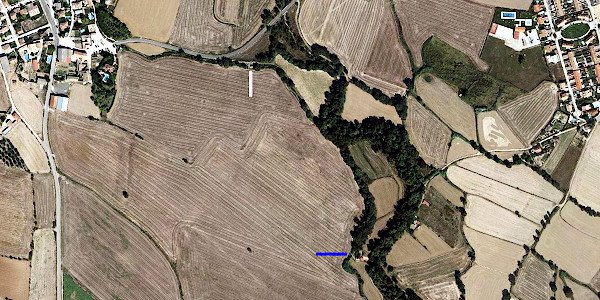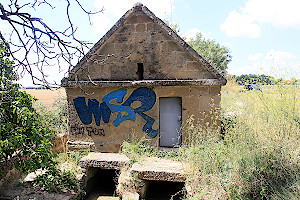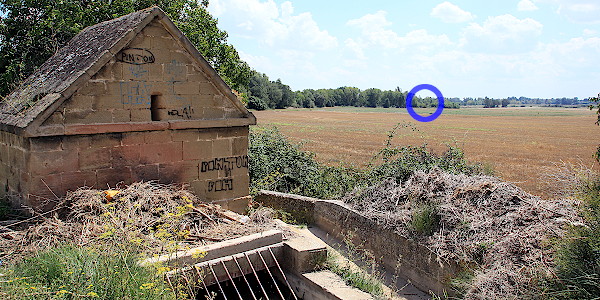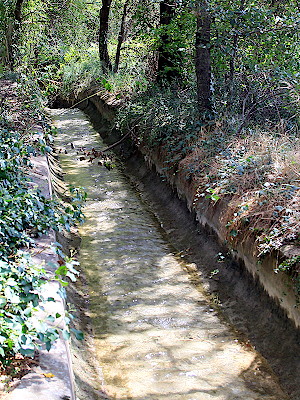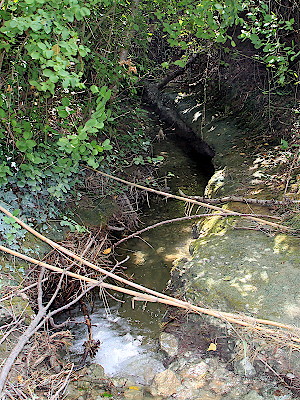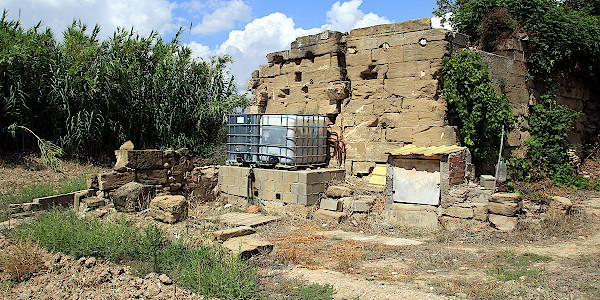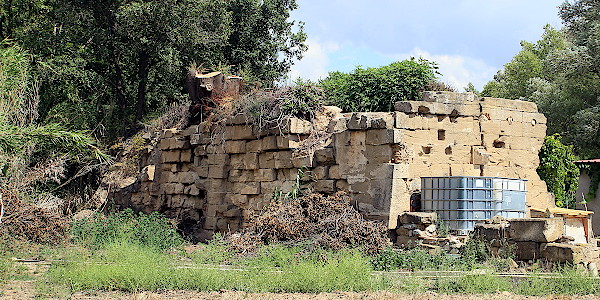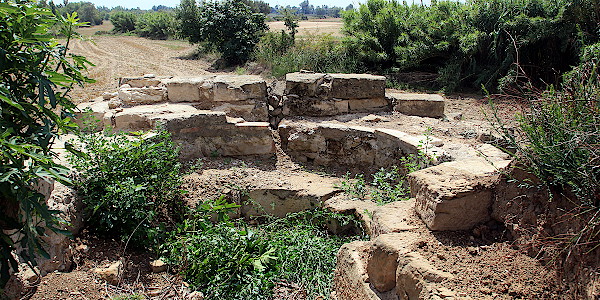Path: Introduction -
Visit the mills; catalogue - Banastás

Mills in Alto Aragón
Banastás

Banastás is a village in the
region, situated to the North of Huesca city. The mill is probably best approached from the road connecting Banastás with Yéqueda.
From Huesca drive northwards on the N-330 or the A-23 (Autovía Mudéjar). If on the A-23
take exit 364 (Yéqueda). In Yéqueda turn left where you find the combination
of a bus shelter (left) and a huge construction (Residencia de Mayores, right).
You may find the sign for Banastás after you take the turn.
Follow the narrow road and after some time you will cross the
(1 top center). Now watch out for a tiny building at your left (white stroke in 1, 2).
There is enough space to park your vehicle.
Pictures: 23.VIII.2015
